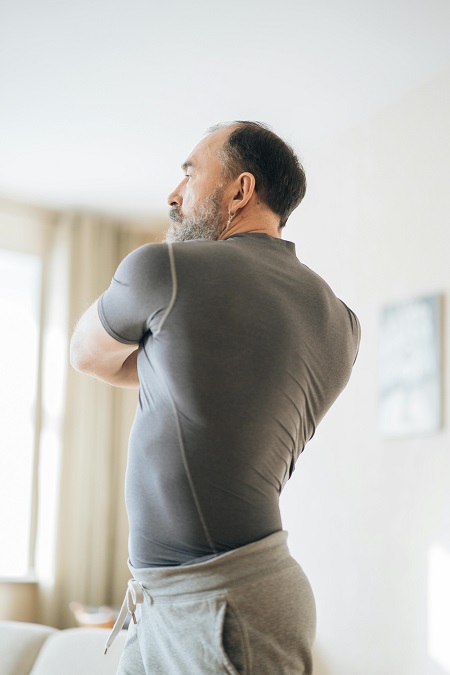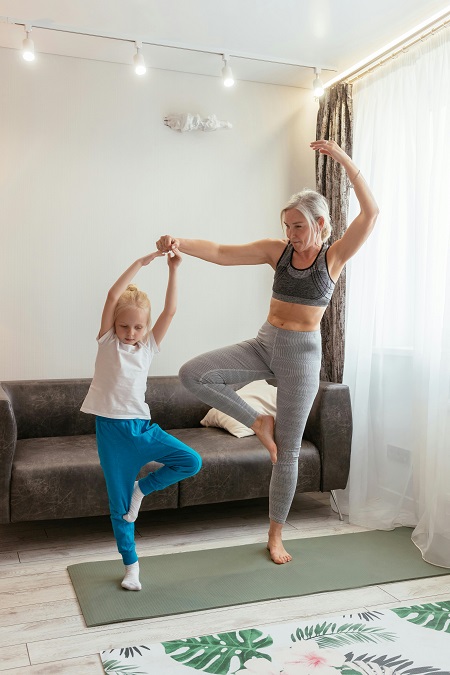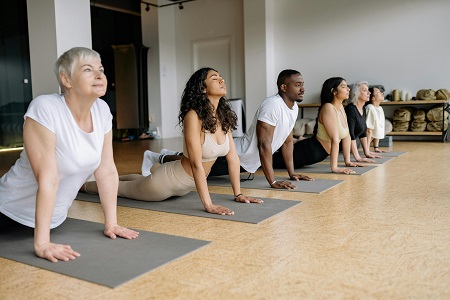Physical fitness is an essential component of maintaining good health throughout life, especially as one transitions from adulthood into old age. Regular physical activity not only improves the quality of life but also extends lifespan and promotes independence in later years. The body undergoes significant changes with age, but by incorporating specific strategies, it is possible to stay fit and healthy, reduce the risk of chronic diseases, and maintain mobility and strength. This essay explores the importance of maintaining physical fitness from adulthood to old age, focusing on the types of exercises, lifestyle adjustments, and other practices that support lifelong health.
The Importance of Physical Fitness Throughout Life
As people age, they naturally experience a decline in muscle mass, bone density, flexibility, and cardiovascular function.Indeed, research indicates that at the age of 30, adults lose roughly 3-8% of their muscle mass every ten years.Furthermore, the risk of developing chronic conditions such as heart disease, arthritis, diabetes, and obesity increases with age. However, maintaining physical fitness can prevent or delay the onset of many of these health issues.
Physically active individuals tend to have better mental health, as exercise is known to release endorphins that improve mood and reduce feelings of stress, anxiety, and depression. Regular exercise has also been shown to preserve cognitive function, reducing the risk of age-related cognitive decline and dementia. Additionally, staying physically fit supports the maintenance of a healthy weight, good balance, and coordination, which are key for reducing the risk of falls and injuries in older adults.
Physical Fitness Guidelines for Adults

1. Cardiovascular Exercise
Cardiovascular exercise essential,or aerobic exercise, is crucial for maintaining a healthy heart and lungs throughout adulthood and into old age. This type of exercise increases heart rate, improves circulation, and enhances lung capacity. According to the American Heart Association, adults should get 150 minutes of exercise and 70-75 minutes of moderate-intensity activity per week to maintain fitness and maintain a healthy body.
To stay healthy essential through physical exercise and to prevent diseases like heart disease, we need to do exercises like walking, running, and cycling every day in our daily lives.As individuals age, the intensity and duration of cardiovascular exercises may need to be adjusted based on personal fitness levels and physical limitations. For older adults, walking or swimming may be gentler on the joints, while more vigorous activities like running or aerobics may become harder to sustain. Nonetheless, staying active, even at a moderate intensity, is essential for maintaining heart health and overall fitness.
For those with joint problems or arthritis, water aerobics or cycling on a stationary bike can provide excellent cardiovascular benefits without the strain on the joints. Additionally, engaging in low-impact exercises can help maintain stamina, improve endurance, and support cardiovascular health over time.
2. Strength Training

Sarcopenia is the term for the natural loss of muscular mass that occurs as people age. This reduction in muscle mass may result in a decline in strength, balance, and mobility.Therefore, strength training is a vital aspect of maintaining physical fitness throughout adulthood and into old age. Strength exercises help to maintain and increase muscle mass, which in turn improves metabolism, functional movement, and bone health essential.
Strength training exercises can include lifting weights, using resistance bands, or engaging in bodyweight exercises such as squats, lunges, and push-ups. The American College of Sports Medicine recommends that adults perform strength training exercises at least two days per week, targeting all major muscle groups.
For older adults, strength training should be adjusted to match their abilities. For instance, lighter weights or resistance bands may be appropriate, and exercises can be modified to reduce the risk of injury. It is essential to include both upper and lower body exercises to improve overall muscle strength, which helps in daily activities like climbing stairs, lifting groceries, and even standing up from a chair. In addition to improving muscle mass, strength training supports bone density, reducing the risk of osteoporosis.
3. Flexibility and Balance Exercises

As people age, their flexibility and balance naturally decline, which increases the risk of falls and injuries. To address this, incorporating flexibility and balance exercises into a fitness routine is key for maintaining mobility, stability, and independence.
Yoga and Pilates are excellent choices for improving flexibility and balance. Both practices involve movements that stretch and strengthen muscles, increase flexibility, and improve balance. In addition to being beneficial for physical fitness, yoga and Pilates can enhance mental well-being by reducing stress and promoting mindfulness.
Other balance exercises include tai chi, which is particularly beneficial for older adults due to its gentle, flowing movements. Tai chi helps to improve coordination and reduce the risk of falls. Moreover, simple exercises such as standing on one leg or performing heel-to-toe walking can be effective for improving balance.
The American Geriatrics Society recommends that older adults perform balance exercises essential at least three times a week to help prevent falls. Stretching exercises should be incorporated into the routine two to three times a week to maintain flexibility, improve posture, and reduce stiffness in the joints.
4. Rest and Recovery
Adequate rest and recovery are just as important as the exercise itself. As individuals age, their bodies require more time to recover from intense workouts, and overtraining can lead to injuries or burnout. Ensuring that there is enough time for rest between exercise sessions is essential for maintaining fitness and avoiding physical strain.
Sleep plays a critical role in recovery. The body balances hormones, solidifies memories, and rebuilds and regenerates muscular tissue as you sleep.Older adults often experience disrupted sleep patterns, so prioritizing good sleep hygiene is necessary for optimal physical recovery. Establishing a consistent sleep schedule, limiting screen time before bed, and creating a relaxing bedtime routine can help improve sleep quality.
Furthermore, active recovery practices, such as light stretching, walking, or gentle yoga, can help reduce muscle soreness and promote circulation. Additionally, staying hydrated and consuming proper nutrients (including protein, vitamins, and minerals) is essential for muscle repair and recovery.
5. Nutrition and Hydration
A balanced diet that supports physical fitness is crucial for people of all ages. Proper nutrition ensures the body has the fuel and nutrients it needs to perform physical activities and recover from exercise. As individuals age, the body’s nutritional requirements change. For instance, older adults may need more protein to maintain muscle mass, more calcium and vitamin D for bone health, and more fiber to support digestive health.
Including a variety of nutrient-dense foods, such as fruits, vegetables, whole grains, lean proteins, and healthy fats, is key for maintaining overall health essential.Special attention should be paid to hydration, as older adults are at higher risk of dehydration due to changes in the body’s fluid balance.
Supplements, such as calcium and vitamin D, may be recommended for older adults to support bone health, but these should be taken in consultation with a healthcare provider. Omega-3 fatty acids, which are found in fatty fish like salmon, can help reduce inflammation and support heart health, which is especially important in older age.
6. Mental Health and Stress Management
Mental health is an often-overlooked aspect of physical fitness essential, but it plays a significant role in overall well-being. Chronic stress, depression, and anxiety can have detrimental effects on the body, leading to inflammation, hormonal imbalances, and weakened immune function. Therefore, managing stress is essential for maintaining both physical and mental fitness throughout life.
Physical exercise is one of the most effective ways to manage stress essential.In addition to the benefits of regular exercise on cardiovascular health and muscle strength, physical activity triggers the release of endorphins, which improve mood and reduce feelings of anxiety and depression. Mindfulness-based practices, such as meditation and deep breathing exercises, are also beneficial for reducing stress and promoting mental well-being.
Engaging in social activities, pursuing hobbies, and maintaining strong social connections are also important for mental health in older adulthood. Loneliness and isolation can contribute to depression and cognitive decline, so staying socially active is essential for preserving both mental and physical health.
Adjusting to Life Changes and Aging
While the principles of physical fitness remain the same, the approach to exercise may need to be adjusted as one ages. In adulthood, physical fitness essential may be maintained through regular, moderate exercise. However, as individuals move into older adulthood, their focus may shift more toward maintaining functional movement, flexibility, and balance rather than high-intensity strength or endurance activities. This shift is a natural part of the aging process, and adopting an individualized approach to fitness is essential for optimal health and longevity.
Additionally, it is essential to monitor and manage any existing health conditions, such as arthritis, diabetes, or high blood pressure, with the guidance of healthcare professionals. Exercise can be modified to accommodate these conditions, and in some cases, physical therapy may be necessary to address specific essential.
Conclusion
Maintaining physical fitness from adulthood into old age is crucial for promoting a long, healthy, and independent life. Regular cardiovascular exercise, strength training, flexibility and balance exercises, adequate rest and recovery, proper nutrition, and stress management all play important roles in maintaining physical fitness throughout life. By adopting a holistic approach to fitness that includes both physical and mental health, individuals can reduce the risk of chronic diseases, maintain functional independence, and enhance their overall quality of life as they age. While the body may change with age, staying physically active is one of the most effective ways to age gracefully and with vitality.
FAQ,
Why is fitness important for children?
Fitness helps children build strong bones and muscles, maintain a healthy weight, improve mental health, and develop good habits for life.
What type of exercise is best for adults in their 30s and 40s?
A mix of cardio, strength training, and flexibility exercises is ideal to maintain heart health, muscle mass, and mobility.
Can strength training benefit people over 60?
Yes! Strength training helps older adults maintain muscle mass, boost metabolism, and prevent falls by improving balance and bone density.
How can families encourage fitness together?
Plan active outings like hikes, bike rides, or dance nights at home to create fun, healthy traditions.
How can busy adults fit fitness into their day?
By breaking exercise into short 10-minute sessions, taking stairs instead of elevators, walking during lunch breaks, or doing home workouts.

1 comment
[…] lose weight, build muscle, or boost your overall health, the program’s approach is rooted in the latest fitness research and expert insights. The focus is not only on physical exercise but also on the essential […]